Traveling through Croatia by camper van, we thought it a good idea to explore Šibenik and the nearby Krka National Park.
Walking along the promenade, Šibenik felt like many other coastal cities in Croatia. But when we made our way up through the labyrinth of passages, stairways and streets in the car-free historic center, the impression was amazing – we found ourselves in a town that was entirely made from stone!
By the way, Šibenik is one of the oldest cities on the coast that were not founded by the Illyrians, Greeks and Romans, but by the local Croates. It was mentioned for the first time in 1066 by a chart of King Petar Krešimir IV and it got city rights and an own diocese in 1298.
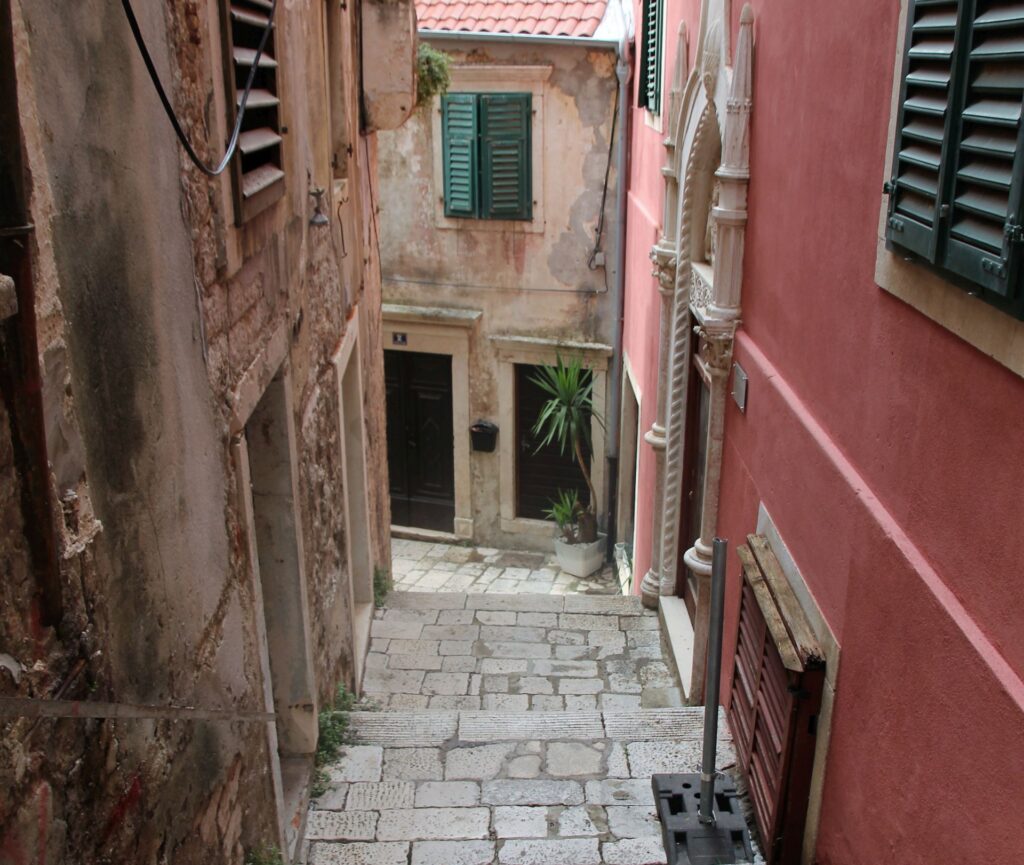
Šibenik old town
As we had not planned to spend much time in Šibenik, we did not visit the fortresses of St. Michael’s, Barone and St. John’s, which are located above the town and offer nice views of the surroundings.
For us, it was a fun thing to walk around aimlessly and to explore, discover and wander at our leisure. The old town appeared to be full with historic sites, ranging from ancient churches to palaces and mansions. Many paved and cobbled streets connected these buildings; at some places, the streets passed underneath a beautiful arch.
The most famous attraction in Šibenik is the Cathedral of St. James (Sveti Jakov). It was built between 1431 and 1535 and it is one of the most significant monumental cathedrals in Europe. The cathedral is the only cathedral in Europe that has been constructed with only stone.

No wonder that the St. James Cathedral was put on the List of UNESCO World Heritage in 2000. And by the way, did you know it was featured on Game of Thrones?
The apses of the cathedral are well-known in the history of Renaissance for their frieze of 71 human and three lion heads, realistically carved in life size by Jure Dalmatinac. This is a stone gallery of psychological portraits and human images, arising from the spirit of early Renaissance humanism.
The heads are said to be portraits of local citizens. If you didn’t pay your contribution, you may not have liked how you were represented! It is amazing to think that these 15th-century citizens are still here today, immortalized in stone. You would really think that they will come to life again at any moment…
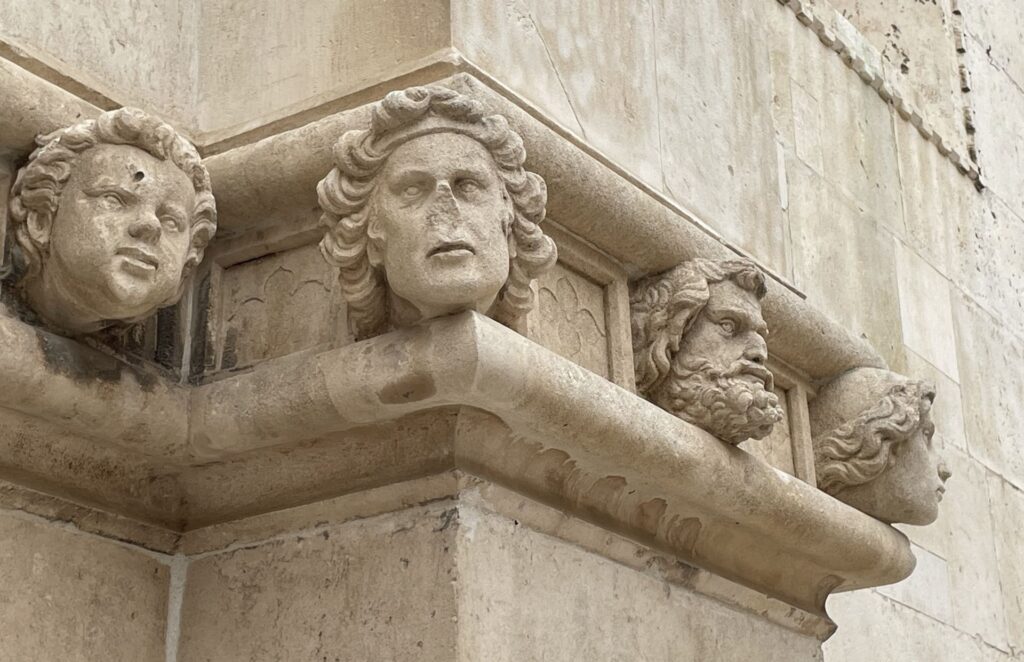
Inside the cathedral we also admired the Baptistery. This small room was another masterpiece created in the 1440s by Jure Dalmatinac. The lace work and sculptures (all meticulously carved from stone) are really stunning.
Across the square facing the cathedral we saw a bronze statue of the master of works himself, Jure Dalmatinac, by the renowned 20th-century Croatian sculptor Ivan Meštrović. Jure is standing there with his stonemason’s tools, looking proudly at his masterpiece.
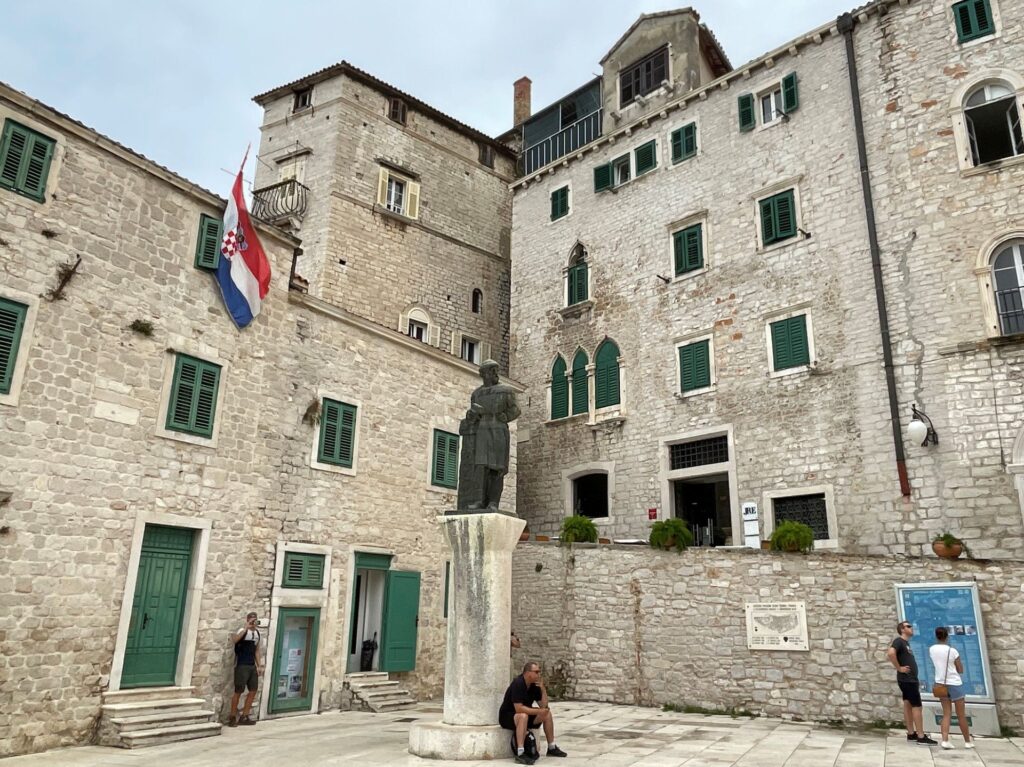
But there was another wonderful Renaissance building on the medieval square: the City Hall of Šibenik. It was constructed between 1533 and 1546. Its beautiful façade was made up of columns and arches, a balustrade, and a balcony.
It was nice to have coffee on an open-air terrace in front of this historic building.
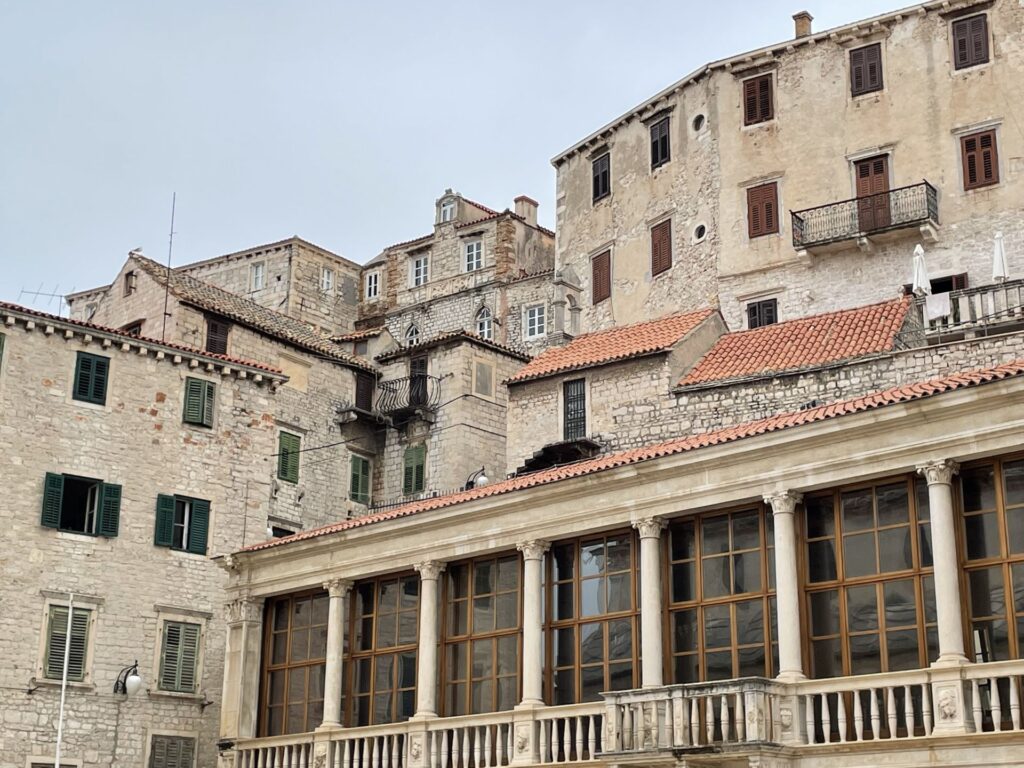
Although the City Hall was entirely leveled during an allied air raid in 1943, it was meticulously rebuilt and now looks exactly like it did before World War II.
Nearby we saw the church of St. Barbara with a clock on its façade.

Finally, we visited the Civitas Sacra Interpretation Center, which allowed us to admire many exhibits related to the construction of the St. James Cathedral.
We didn’t only see medieval sculptures and icons, but we also learned a lot about the technology of constructing such a beautiful stone building without binding material.
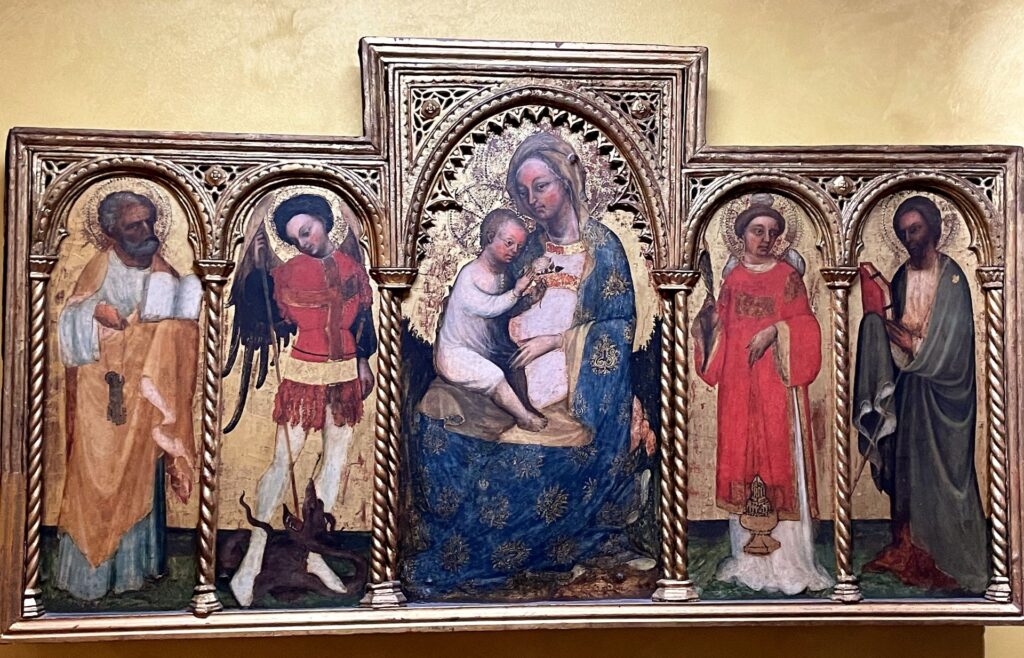
By the way, did you know that Šibenik is the first city in the world whose public lighting was powered by electricity? That happened in 1895!
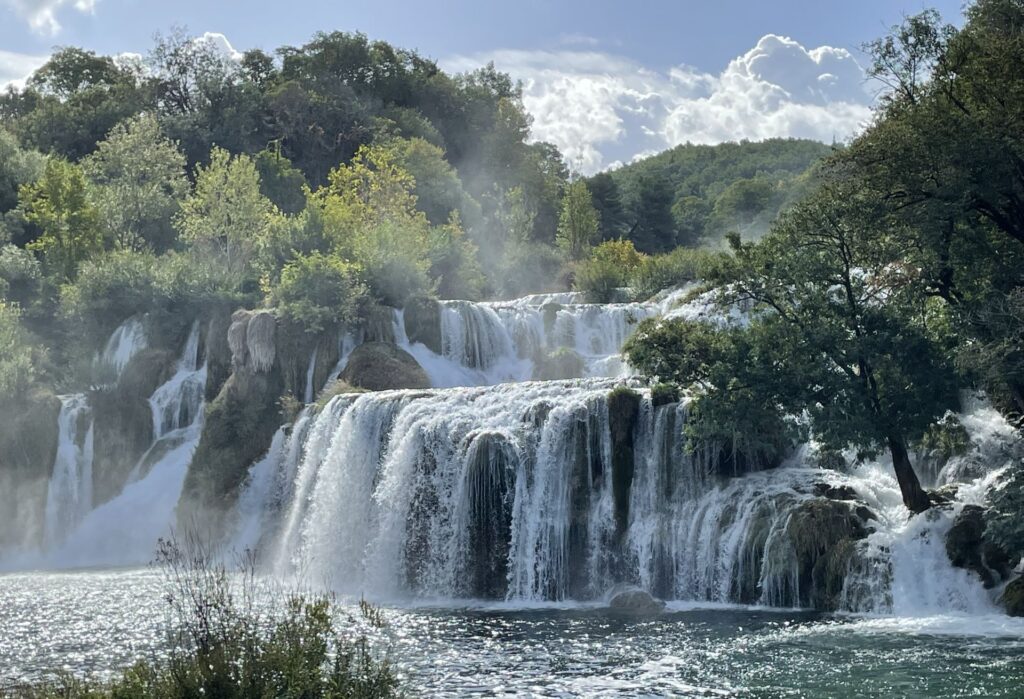
Krka National Park
Not located within Šibenik, but close enough to be considered a local highlight, Krka National Park lies merely a few kilometers to the city’s northeast—about 15 minutes by car from the city center. This amazing national park comprises a part of the Krka river and the forests on its banks.
There are a few entrances to the national park. The one closest to the waterfalls is the Lozovac entrance, but we decided to approach the park at the village of Skradin, the most scenic entrance, as it requires a 4 km boat ride along the Krka River.
Krka National Park contains beautiful lakes and impressive waterfalls, but the main attraction is Skradinski Buk with 17 waterfalls.
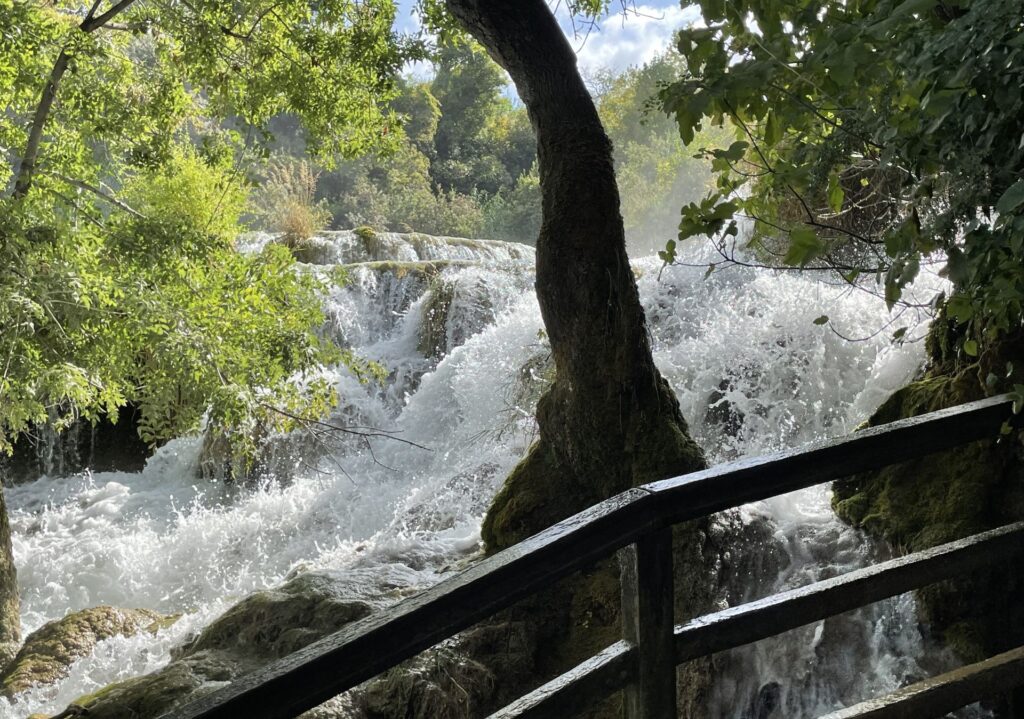
We parked our camper van at a big parking lot (free parking). From here we took a special shuttle boat that leaves each hour. The entrance ticket (including boat) was around 15,00 €. Tickets can also be bought online.
After a nice boat ride over the Krka River, we took a walk along the water. The 2 km trail went along board walks and tiny islands in the emerald green river and it ended at the park’s largest waterfall, Skradinski Buk. This 800 m-long waterfall drops by nearly 46 m before falling into the lower lake. It used to be possible to swim here, but since 2021 this has been forbidden in order to preserve the waters of the park.
Apart from a wide variety of flora (over 800 species of plant life have been identified in the National Park), we also saw many fishes and even a snake in the clear water.
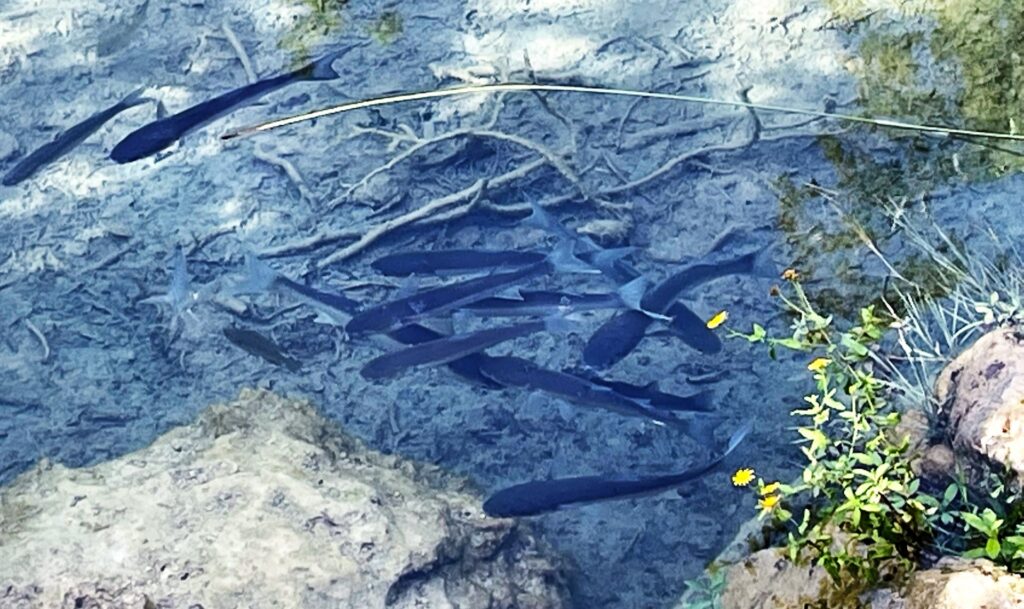
Nearby was a group of mill cottages transformed into workshops, souvenir shops and restaurants. Although we traveled in September, it was quite busy in this area.
By the way, the Jaruga hydroelectric power plant on the Krka falls is the first hydroelectric power plant in Europe and the second in the world, opened only two days after the first at Niagara Falls!
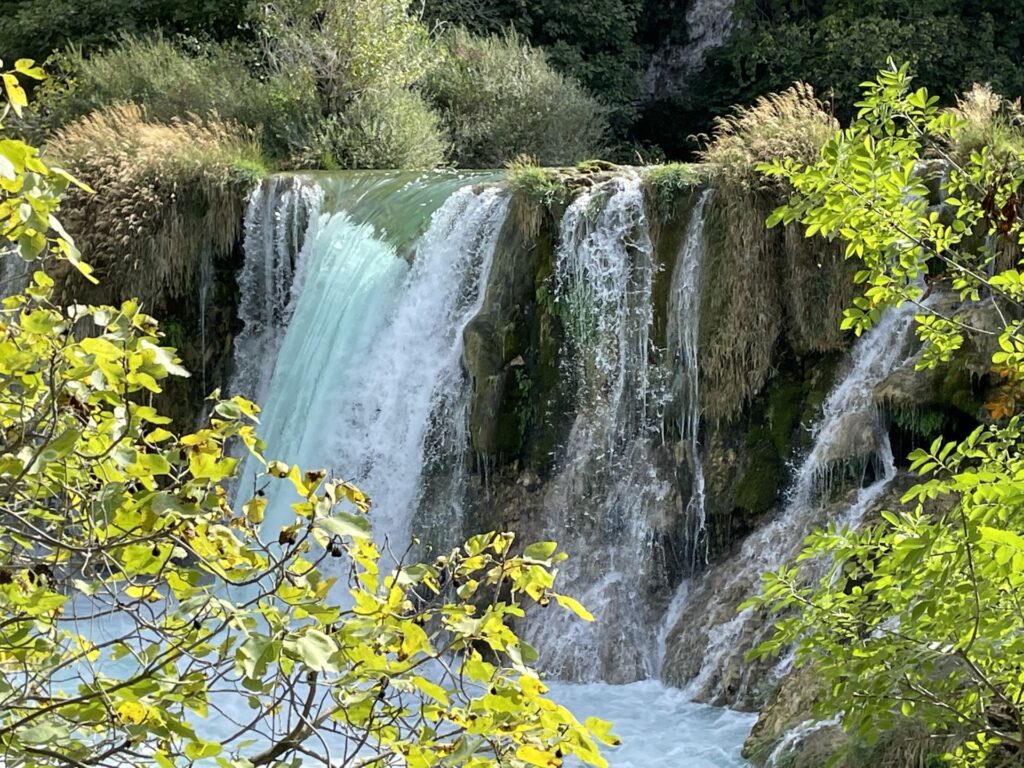
If you plan to travel along the Croatian highway, don’t miss a visit to Šibenik and the Krka National Park!
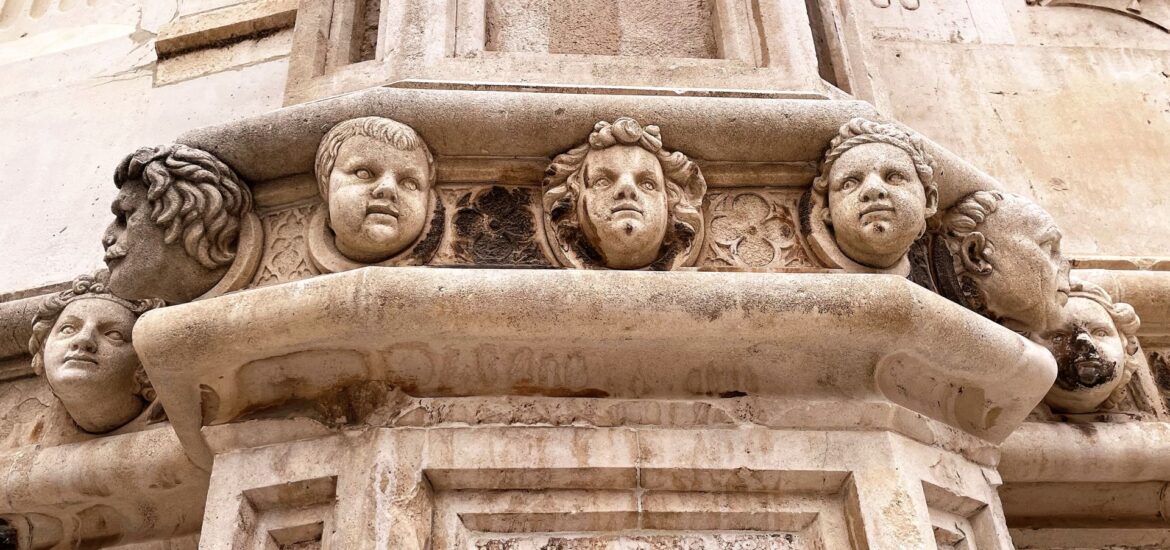
Tekst sam podelila sa prijateljicom – arhitektom, konzervatorom iz Šibenika. Ovo je njena reakcija:
Itekako je zanimljiv, zaista. Dobar promotivan tekst 👍
Veliki pozdrav
Da, zaboravila sam napomenuti, 1 od 5 svjetskih gradova s dva Unesco spomenika, katedrala i tvrđava sv. Nikole